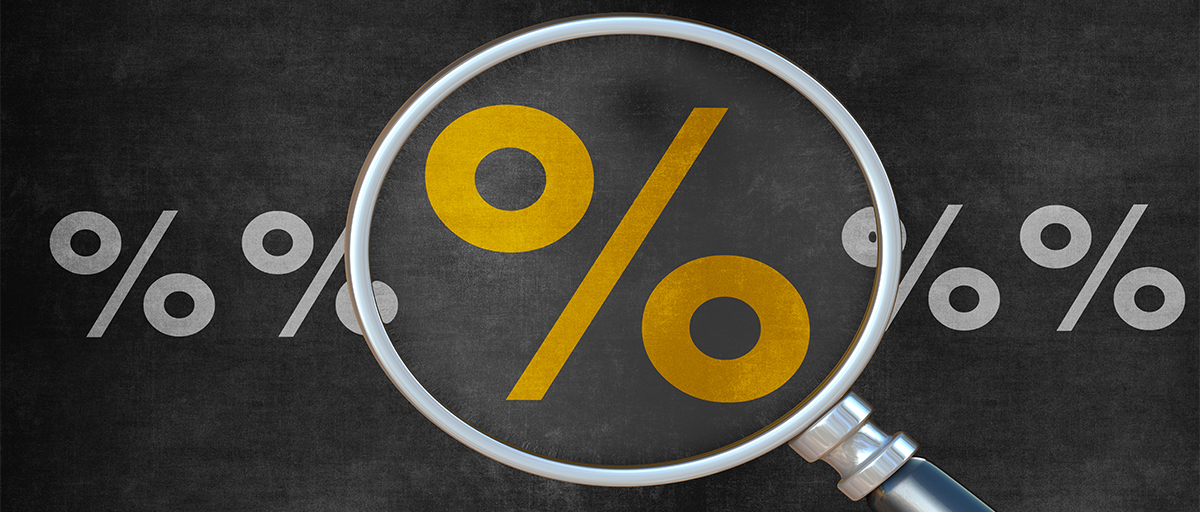 |
An article written by Ray Calleja: Head – Private Clients, MeDirect |
In this article we will discuss different type of returns for a mutual fund, what these terms mean and also highlight the main differences between them. These measures look at an investment’s past performance and are all useful to help you analyse a mutual fund’s performance.
Absolute Return
As we saw in previous articles mutual fund performance is nearly always compared to a benchmark. For example, a US large-cap equity mutual fund is frequently compared to the S&P 500 Index. The relative return of a fund measures how it has performed compared to such a benchmark. So, say your mutual fund provided a return of 8% and the return of its benchmark is 6%, the relative return is 2%. The absolute return is the total return of the mutual fund. In this case, the absolute return is 8%. Relative returns are important because they tell the investor whether their mutual fund is giving a return in excess of the mutual fund’s benchmark. You may have a case where your mutual fund beat its benchmark by say 5%. We would say that the fund manager did his/her job well. The relative return is considered to be very positive. But what if the benchmark was down 10%, it would mean that you still lost 5% on your holdings. Would you still be happy with that?
There are specific mutual funds which are mindful of this situation. They are called Absolute Return Mutual Funds, where the sole aim of their fund managers is to achieve a specific goal in mind, i.e. to provide a positive return regardless of benchmarks and the market. For example, they want to beat Government bond yields by 2%.
Total Return
The next point we will discuss is a term that is very commonly used – Total Return (also known as TR). This is the actual rate of return of a mutual fund or investment over a given evaluation period. Total return includes interest from fixed-income investments, capital gains from changes in the market price of assets, dividends and distributions realised over a given period of time. Total return is expressed as a percentage of the amount invested and is a measure of an investment’s overall performance.
Let us take an example where you buy 100 shares in company A at €10 per share for an initial value of €1,000. Company A pays a dividend of 4% which you will re-invest to buy four additional shares. After one year, the share price rises to €12. To calculate the investment’s total return, you divide the total investment gains (104 shares x €12 per share = €1,248 current value less the €1,000 initial value = €148 total gains) by the initial value of the investment (€1,000) and multiplied by 100 to show it as a percentage. The investment’s total return is therefore 14.8%.
Total return is a very important measure as it determines an investment’s real growth over time and is particularly useful when analysing a company’s historical performance. When you are looking at your mutual fund’s performance, you should look at its average annual total returns for different periods of time since those figures will show the reinvestment of dividends and capital gains distributions.
Annualised Return
It is also important to distinguish between annual return and annualised return. The annual return is the gain or loss of the initial investment over a given year, while the Annualised return is the average rate of return over a multiple-year time frame.
If we take an example, you could have a mutual fund, which provided a 10% return in 2019 (which essentially refers to the return earned between 1 January and 31 December of any given year – in this case 2019), while the 10-year historical return was 8%. The 2019 gain is the annual return, and the 10-year performance is the average return during the period. The mutual fund may have made large gains, whereas it may have also had poor returns during the said 10-year but it would have averaged out to 8% per year, i.e. the average return over the period is annualised.
The annualised return formula is calculated in a way to show what an investor would earn over a period of time if the annual return was compounded, i.e. after the first year has elapsed, the return thereafter is calculated on the value at the end of the first year not on the original cost and so on.
For equity mutual funds, a ‘good’ long-term return (annualised, for 10 years or more) is 8% to 10%. For bond mutual funds, a ‘good’ long-term return would be 4% to 5%. You should also compare any given return for a mutual fund with its category average and against its benchmark.
Trailing Returns
A trailing return looks back at a fund’s annualised total return over a specific time period – usually for the last quarter, six months, one year etc. You may access the Morningstar report for any mutual fund on the MeDirect website, in the Legal Documents section, and you will be able to see the Trailing Returns chart for various time periods (see example below), from 3 months to 5 years, as well as how it compares with a market benchmark like the S&P 500 and other funds it its category.

In this example you will see a one-year trailing return of 8.86%, but higher trailing returns over three- and five-year periods of 14.58 and 14.96 respectively. Those trailing-return figures represent how much the fund returned on an annualised basis as of 4 Sep one, three or five years ago, until the most recent quarter ended 4 Sep 2020.
You need to keep in mind that trailing-return figures assume re-investment of both dividends and interest payments as well as capital gains or losses. Annualised returns are standardised figures that take into account any contributions or withdrawals.
Trailing returns are useful especially if you are comparing two different mutual funds in the same category or if you are assessing how a fund has performed versus a market benchmark. They help present a simplified evaluation of a fund’s performance. You may be attracted to a fund’s high trailing short-term return but that may disguise how volatile the fund has been during a longer time frame. A strong recent performance may mask past problems and that is where rolling returns come in very useful.
Rolling Returns
Rolling returns will show you returns in overlapping cycles starting on the first day of the month and going back as far as the data that is available for any fund. The idea behind this is to show you the frequency and the scale of an investment’s good and bad performance periods. Rolling returns can offer better understanding into a fund’s return history, not influenced by the most recent data (month or quarter-end).
It measures returns on mutual funds at different points of time, thereby eliminating any bias associated with returns observed at a particular point of time. Through rolling returns, you can use several blocks of 3, 5 or 10-year periods at various intervals and see how a mutual fund performed over that period.
A study of rolling returns can show whether a fund is a consistent performer or there is volatility in short periods. Analysing rolling returns can also reveal the maximum return and the minimum return which helps to assess its best and worst periods (years, months, quarters) in terms of returns.
Risk
It is also always advisable to consider the risk involved to achieve the kind of return that you expect from your mutual fund. As we discussed in previous articles, there are various useful risk ratios that you should look at before investing in a mutual fund. The Sharpe ratio is a measurement used to calculate how many units of return any investment offers per unit of risk. The higher the ratio is, the more worthwhile the investment is given the risk it involves. Another measure is standard deviation, which shows how much a fund tends to stray from its own average performance or how volatile it is. This is useful because even a fund that outperforms the market in terms of returns might have horrendous slumps every few years. Both of these measures become more accurate over longer periods.
True Measure
Having looked at the different type of returns from mutual funds, you will have seen that they are all relevant and have a specific purpose. But as an investor you would do well to take note of the market environment before assessing the relevant returns, measuring the results over a variety of time horizons, and keeping one eye on risk. Like that, you can better ensure that you have taken the true measure of a fund’s performance over time.
The above is for informative purposes only and should not be construed as an offer to sell or solicitation of an offer to subscribe for or purchase any investment. The information provided is subject to change without notice and does not constitute investment advice. MeDirect Bank (Malta) plc has based this document on information obtained from sources it believes to be reliable but which have not been independently verified and therefore does not provide any guarantees, representations or warranties.
The financial instruments discussed may not be suitable for all investors and investors must make their own informed decisions and seek their own advice regarding the appropriateness of investing in financial instruments or implementing strategies discussed herein.
If you invest in any of the products discussed you may lose some or all of the money you invest. The value of your investment may go down as well as up. A commission or sales fee may be charged at the time of the initial purchase for an investment and may be deducted from the invested amount therefore lowering the size of your investment. Any income you get from this investment may go down as well as up. This product may be affected by changes in currency exchange rate movements thereby affecting your investment return therefrom. The performance figures quoted refer to the past and past performance is not a guarantee of future performance or a reliable guide to future performance. Any decision to invest in a mutual fund should always be based upon the details contained in the Prospectus and Key Investor Information Document (KIID), which may be obtained from MeDirect Bank (Malta) plc.
MeDirect Bank (Malta) plc, company registration number C34125, is licensed by the Malta Financial Services Authority under the Banking Act (Cap. 371) and the Investment Services Act (Cap. 370).





